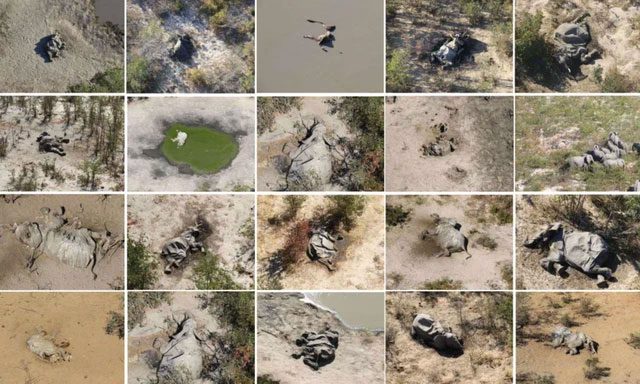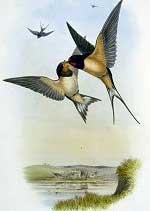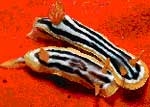In 2020, 350 elephants mysteriously died in Botswana, with an additional 35 similar cases reported in Zimbabwe. Now, scientists have identified the “culprit” behind the mass elephant deaths in Africa.
From May to June 2020, the unexpected deaths in the elephant community in the Okavango Delta of Botswana raised alarm among conservationists and sparked global speculation about the cause behind this horrifying phenomenon.

Images of dead elephants found throughout Botswana and Zimbabwe in 2020. (Photo: REUTERS)
Elephants of all ages, both male and female, were discovered lying scattered across the plains. Many exhibited a condition known as “lateralized behavior,” wandering aimlessly before collapsing face-first onto the ground and dying.
Two months later, an additional 35 elephants were found dead under similar circumstances in northwestern Zimbabwe.
At that time, Botswana officials suspected that the elephants’ deaths were due to an unidentified toxin-producing bacterium. However, no further details were released to explain the underlying cause affecting the African savanna elephant population, which is already endangered.
After more than three years, toxicology tests conducted on the remains of several elephants in Zimbabwe finally identified the “silent killer.” It was determined to be the bacterium Bisgaard taxon 45, a previously unnamed relative of the bacterium Pasteurella multocida.
This newly discovered bacterium causes blood infections and has previously led to the mass deaths of 200,000 saigas in Kazakhstan in 2015, according to a report published in the journal Nature Communications.
This finding is part of a research project conducted by an international team of experts from the Victoria Falls Wildlife Fund (Zimbabwe), the University of Surrey (UK), laboratories in South Africa, and the UK Animal and Plant Health Agency.
The population of African elephants is declining at a rate of approximately 8% per year, primarily due to poaching, with only about 350,000 individuals remaining in the wild.
The report highlights that infectious diseases need to be added to the list of challenges this species faces in its struggle for survival.





















































